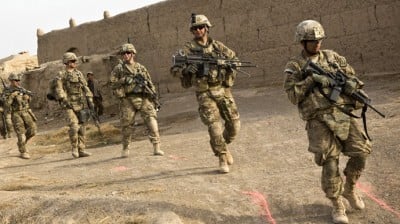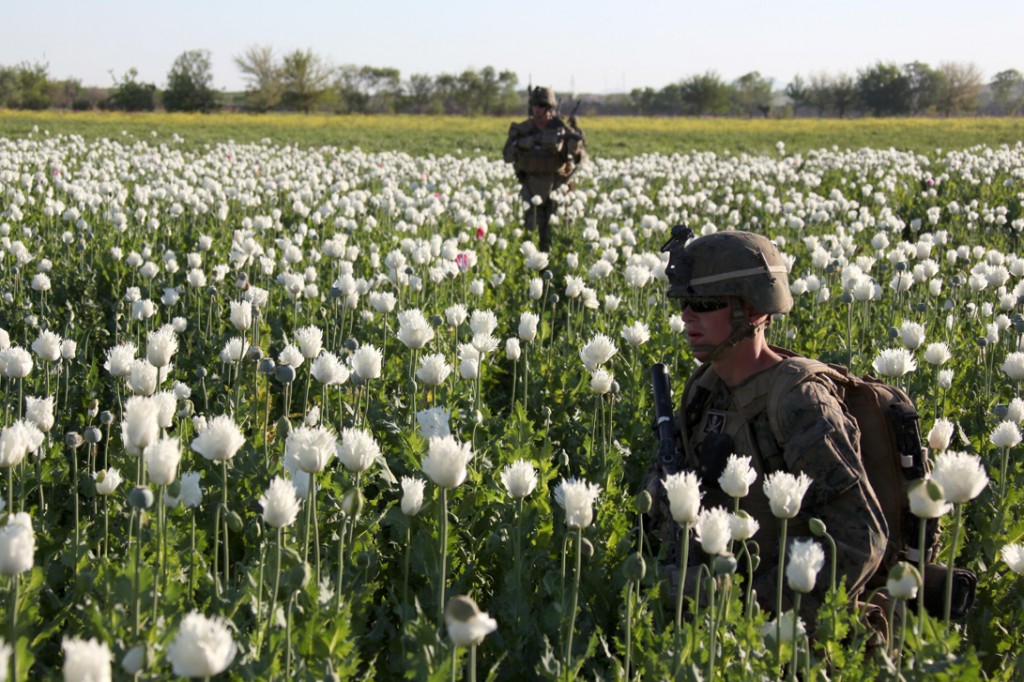NATO’s Epic Fail: Taliban Retake Major Hub of Kunduz in Afghanistan

US and NATO technocrats found themselves bewildered again today upon news that the Taliban has overtaken a strategic hub of Kunduz in northern Afghanistan.
It’s the Taliban’s biggest military gain since they lost power in 2001.
Something doesn’t add up. After 15 years, thousands of dead western soldiers and hundreds of thousands of dead Afghan civilians – and a total financial cost of over half a trillion dollars – the US-led NATO experiment in Afghanistan has chalked up another embarrassing failure against an enemy with no money and military equipment aside from Toyota pick-up trucks, various and sundry IED’s and an aging arsenal of Soviet-era Kalashnikov rifles.

Taliban fighters with a captured Afghan Army Humvee in Kunduz province, Afghanistan (Image Source: The Long War)
US and NATO technocrats found themselves bewildered again today upon news that the Taliban has overtaken a strategic hub of Kunduz in northern Afghanistan.
It’s the Taliban’s biggest military gain since they lost power in 2001.
Something doesn’t add up. After 15 years, thousands of dead western soldiers and hundreds of thousands of dead Afghan civilians – and a total financial cost of over half a trillion dollars – the US-led NATO experiment in Afghanistan has chalked up another embarrassing failure against an enemy with no money and military equipment aside from Toyota pick-up trucks, various and sundry IED’s and an aging arsenal of Soviet-era Kalashnikov rifles.
Taliban fighters with a captured Afghan Army Humvee in Kunduz province, Afghanistan (Image Source: The Long War)
It started over the weekend with the Taliban capturing a modest earthen and stone fort named ‘Bala Hisar’. After 200 US-trained and managed Afghan government forces failed to hold the line – before eventually cutting and running away after running out of food and ammunition – Taliban forces moved in with almost no resistance. Even NATO airstrikes and special forces could not stop the rag-tag Taliban regulars from retaking the city. Is it that NATO are really that bad, or is this simply an unwinnable combat environment for a foreign occupying military force?
Last night, the Taliban tried to capture the airport, but US air strikes stopped their advance. It’s unknown how long the remaining forces at the airport will be able to hold off the Taliban fighters, but Afghan officials maintain that they will be able to retake the city once reinforcements arrive later today.
According to Afghanistan’s department of health more than 40 people had been killed and some 330 injured so far in the fighting – with most of them being civilians. Afghan forces
Western media are keen to frame this inside their own prepackaged propaganda lines, claiming that this Taliban victory all part of a “competition with the Islamic State group for control of the region.”
Coincidentally (or not) the Taliban win coincided with the first anniversary of formation of the National Unity Government in Kabul.
TERROR: MADE IN AMERICA
Most Americans are still mostly unaware that it was the United States which first created and developed the Islamicist insurgency in Afghanistan through Operation Cyclone back in 1979. Those ‘Mujaheddin’ fighters went on to form ‘al Qaeda’ [supported by the CIA], before laying the foundation of today’s ISIS militant army currently running amok in Syria and Iraq.
Americans have also forgotten that despite claims to the contrary in 2001, the country Afghanistan did not attack the US on September 11, 2001. Still, this did not stop the US and NATO from bombing, occupying and causing further chaos and instability in both Afghanistan and its neighbor Pakistan. In fact, there is still no actual proof that Osama bin Laden carried out the infamous attacks of 9/11, even though this was the sole pretext for America’s “Authorization of Force” for Afghanistan in the first place.

EXPORT BUSINESS: US Soldiers guarding poppy fields in Afghanistan (Image Source: Public Intelligence)
NARCO-WARS
21WIRE readers might also be interested to know that the city of Kunduz is also a key distribution point for Afghanistan and NATO’s number one export out of this region: DRUGS.
Kunduz is a gateway to the country’s north along a very porous Tajikistan border. Thousands of tons of smuggling of Afghan opium and heroin are smuggled through this route under the watchful eye of the US-led military force there, before crossing Central Asia and into Europe were the real profits are made.
Aside from becoming the world’s top heroin exporter after the US arrived on the scene, Afghanistan is also now the planet’s number one producer of cannabis.
21WIRE was one of the first alternative media outlets to illustrate exactly how the War on Terror meets the War on Drugs back in 2010.
How long before the citizens of the US and its European allies wise-up when it comes to the 15 year fraud in Afghanistan?

